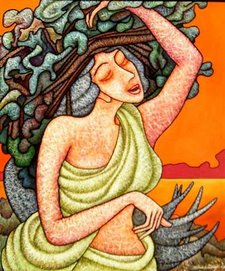
To my surprise, I discovered that the Tanoura or the Whirling Dervish is a form of Sufi worship. Sufi whirling is one of the rituals performed by Sufi orders.
The practice of Sufi whirling (or Sufi spinning), is a twirling meditation that originated among the Turkish Sufis, which is still practiced by the Dervishes of the Mevlevi order. It is a symbolic ritual through which dervishes (also called semazens) aim to reach the "perfect" (kemal). They try to desert their nefs', egos or personal [bad] desires by listening [to their master and sufi music], thinking [about God] and whirling which resembles the rotation of other beings such as electrons and planets of the micro- and macrocosmos.
As explained by Sufis:
In the symbolism of the Sema ritual, the semazen's camel's hair hat (sikke) represents the tombstone of the ego; his wide, white skirt represents the ego's shroud. By removing his black cloak, he is spiritually reborn to the truth.
At the beginning of the Sema, by holding his arms crosswise, the semazen appears to represent the number one, thus testifying to God's unity.
While whirling, his arms are open: his right arm is directed to the sky, ready to receive God's beneficence; his left hand, upon which his eyes are fastened, is turned toward the earth. The semazen conveys God's spiritual gift to those who are witnessing the Sema.
Revolving from right to left around the heart, the semazen embraces all humanity with love. The human being has been created with love in order to love.
So the next time that I watch the tanoura, I will probably appreciate the significance and the dance itself much more..



No comments:
Post a Comment